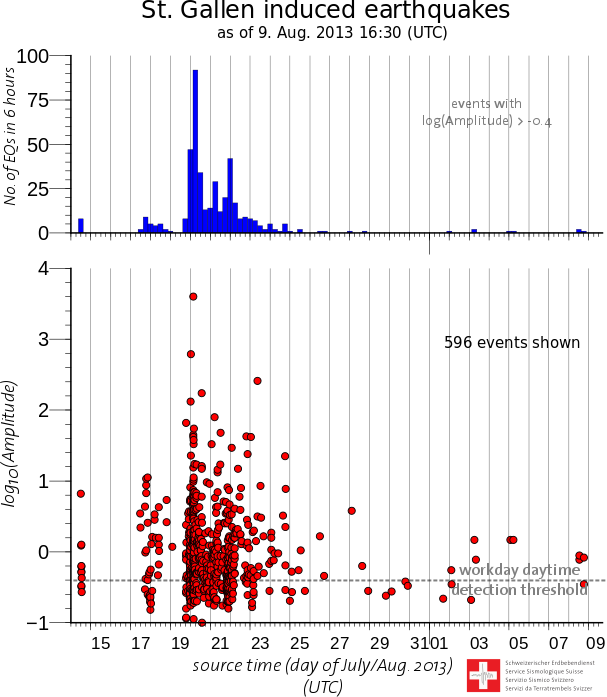The test and stimulation activities carried out as part of the planned geothermal energy project in Sittertobel near St. Gallen began on July 14, 2013. The number and intensity of the microearthquakes induced were as expected and not noticeable to local residents. On the evening of July 19, seismic activity began to increase; the earthquakes became stronger and more frequent. The sequence achieved the highest peak so far on the morning of July 20, with a perceptible quake with a magnitude of 3.5. According to the latest findings, these earthquakes are directly linked to the steps taken to tackle the gas-water leak observed at midday on July 19.
Read more...Since then, seismic activity has fallen steadily. However, stronger quakes can still not be ruled out. The Swiss Seismological Service (SED) continues to monitor seismic activity in St. Gallen around the clock with the help of a dense, local network. The graph on the left shows the most recent record of seismic activity. Quakes with a magnitude of less than 0.5 are generally too weak to be accurately localized in the course of routine evaluation. They are not, therefore, registered in the regular earthquake lists. However, they can be recorded and clearly attributed to the seismic activity at the borehole.
The SED is currently analyzing the data collected in order to gain a better understanding of the processes responsible for the observed earthquakes, and to then possibly derive forecasts for the further course of these and other quake sequences
